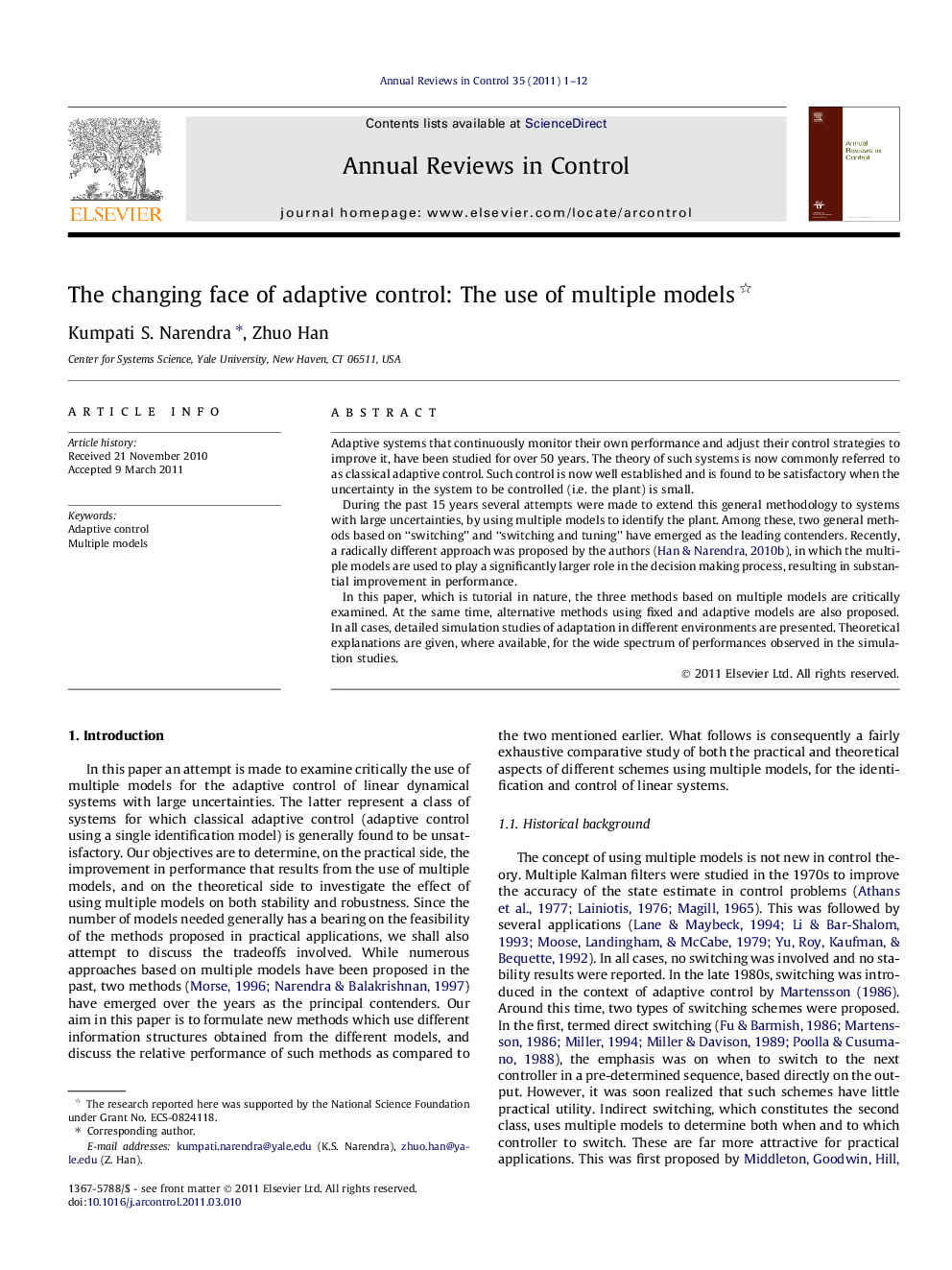| Article ID | Journal | Published Year | Pages | File Type |
|---|---|---|---|---|
| 694826 | Annual Reviews in Control | 2011 | 12 Pages |
Adaptive systems that continuously monitor their own performance and adjust their control strategies to improve it, have been studied for over 50 years. The theory of such systems is now commonly referred to as classical adaptive control. Such control is now well established and is found to be satisfactory when the uncertainty in the system to be controlled (i.e. the plant) is small.During the past 15 years several attempts were made to extend this general methodology to systems with large uncertainties, by using multiple models to identify the plant. Among these, two general methods based on “switching” and “switching and tuning” have emerged as the leading contenders. Recently, a radically different approach was proposed by the authors (Han & Narendra, 2010b), in which the multiple models are used to play a significantly larger role in the decision making process, resulting in substantial improvement in performance.In this paper, which is tutorial in nature, the three methods based on multiple models are critically examined. At the same time, alternative methods using fixed and adaptive models are also proposed. In all cases, detailed simulation studies of adaptation in different environments are presented. Theoretical explanations are given, where available, for the wide spectrum of performances observed in the simulation studies.
